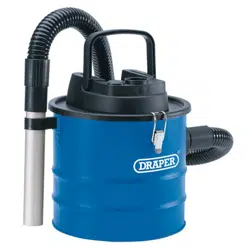Loading ...
Loading ...
Loading ...

– 8 –
5.3 RESIDUAL RISK
Important: Although the safety instructions and operating manuals for our tools contain extensive
instructions of safe working with power tools, every power tool involves a certain residual risk
which can not be completely excluded by safety mechanisms. Power tools must therefore always
be operated with caution!
5.4 SAFETY INSTRUCTIONS FOR MAINS POWERED CHARGERS
& BATTERY PACKS
– The charger is for indoor use only.
– Prior to plugging the charger in to the supply, check that the plug and the cable are in good
repair. If either are damaged, have the defective item replaced immediately by a suitably
qualied person. If the casing of the battery charger is damaged, it is good policy to have the
charger checked over by a suitably qualied person.
– Only use a correctly rated mains outlet to provide power, do not plug into site generators,
attach to engine generators or D.C. sources. Do not use a mains socket outlet that is not
switched.
– Use the correct Draper charger in conjunction with it’s corresponding battery pack (consult the
Draper website for more information or to nd your local stockist).
– Do not charge any other batteries with Draper chargers. Any other application is
considered misuse.
– Do not attempt to charge battery packs that are too hot (over 30ºC) or too cold (under 5ºC),
if these conditions apply set the battery pack aside to “normalise” before proceeding with the
charging operation.
– Set up the charger and cable in a safe place where it won’t be knocked, tripped over, stepped
on, etc. and where it is well ventilated. Make sure the ventilation slots in the charger case are
not obstructed, plug the charger into the socket outlet.
– Inspect the battery pack for damage, if it is undamaged, plug it into the charger, ensuring
the correct orientation. (Most chargers and batteries have ‘keys’ etc, to make sure the battery
pack is not inserted incorrectly, if you are having to ‘force’ the battery pack into the charger,
the chances are you have it the wrong way round, check and try again.)
– Switch the charger on and check that the correct indicators illuminate, allow the battery pack
to charge (see the specic instructions for your charger). Once charging is complete, switch
the charger off, remove the battery pack and store, repeat the procedure if you have more
than one battery pack to charge.
Caution: When the battery charger has been continuously used, the battery charger will be hot.
Once the charging has been completed, give 15 minutes rest until the next charge.
– After charging is complete, unplug the charger from the socket outlet by pulling on the plug.
Do not pull on the cable. Store the charger in a dry secure place.
– If, when the charger was switched on, the correct indications did not occur, leave for two or
three minutes to allow the charger to stabilise, if the correct indications occur, allow the
charging cycle to proceed as normal. If no indication appears at all, switch off, remove the
battery pack, unplug the charger, check that the charger contacts and the battery contacts
are clean and repeat the process. If there is still no indication, switch off, remove the battery
pack, unplug the charger and check the fuse. If the fuse is blown, replace and repeat the
process. If the fuse blows again, or if the fuse was intact, attempt no further action. Refer the
charger to a suitably qualied person for repair.
5. HEALTH AND SAFETY INFORMATION
Loading ...
Loading ...
Loading ...
